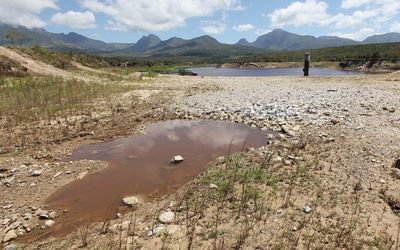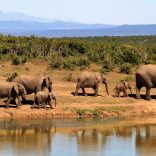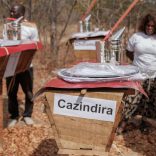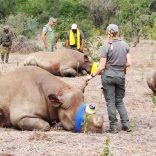Mozambique: Training Inhassoro and Vilankulo practitioners in Nature-based Solutions for climate ...
Breaking: SADC declares drought a regional disaster, calls for US$24 billion in aid

Reuters / A drought-affected region is shown in George in the Western Cape in this December 2009 file photo.
The Southern African economic bloc has declared El Nino-induced drought a regional disaster, and called on Tuesday for US$2.4bn to help 40-million people in the region fight hunger.
The Southern African Development Community (Sadc) comprises 15 countries: Angola, Botswana, Democratic Republic of Congo, Lesotho, Madagascar, Malawi, Mauritius, Mozambique, Namibia, Seychelles, SA, Swaziland, Tanzania, Zambia and Zimbabwe.
Here are some facts about the El Nino weather pattern and its devastating effect on the African continent.
• El Nino is a climate phenomenon which sees a warming of sea-surface temperatures in the Pacific Ocean and occurs every 3-7 years, with consequences felt all over the world.
• It is often followed by an opposite weather cycle, known as La Nina, bringing below-average sea surface temperatures in the Pacific.
• El Nino and La Nina cause changes in rainfall and temperature and are linked to extreme droughts, storms and floods.
• The last El Nino started in March 2015. The World Meteorological Organisation declared it had “disappeared” on July 21.
• The US Climate Prediction Center, an agency of the National Weather Service, said there was a 55% to 60% chance that La Nina would develop during the latter half of 2016.
• More than 60-million people in 22 countries across Southern and Eastern Africa, Central America and the Pacific are facing food shortages because of El Nino, according to the UN.
• Two-thirds of them are in east and southern Africa where some 23-million require immediate humanitarian aid.
• The drought caused by El Nino has resulted in widespread crop failures and poor harvests, with a 9.3-million tonne regional shortfall in cereal harvest production, Sadc has said.
• El Nino has also affected livestock, with about
643,000 drought-related livestock deaths reported in Botswana, Swaziland, SA, Namibia and Zimbabwe alone.
• A report by World Vision, the United Nations Children’s Fund (Unicef) and Plan International said the drought has resulted in increased numbers of children selling sex and doing domestic work to survive.
• The US, Britain and the EU have pledged $300m, £72m and €60m to the Sadc appeal.












Leave a Reply
Be the First to Comment!
You must be logged in to post a comment.
You must be logged in to post a comment.